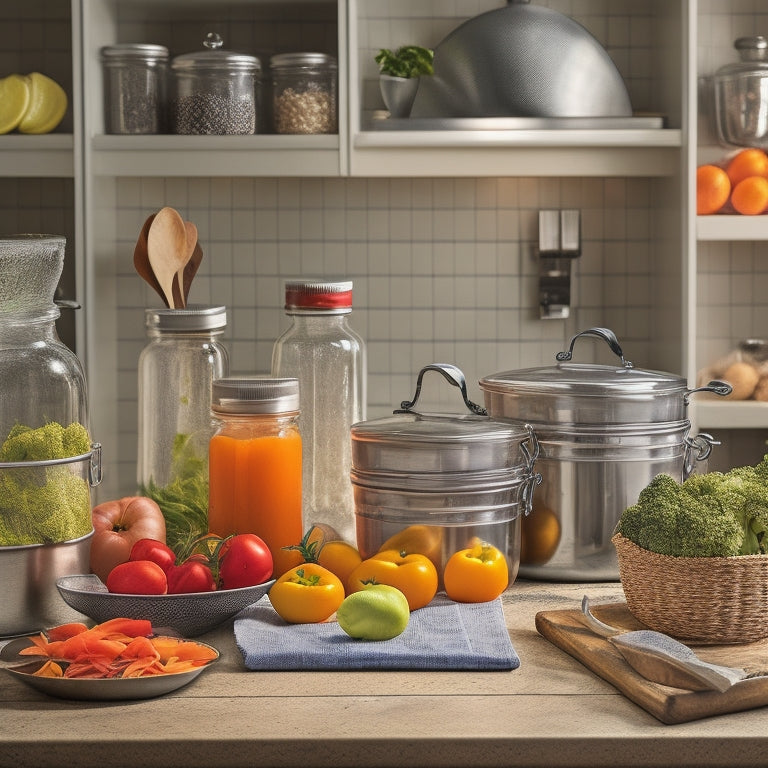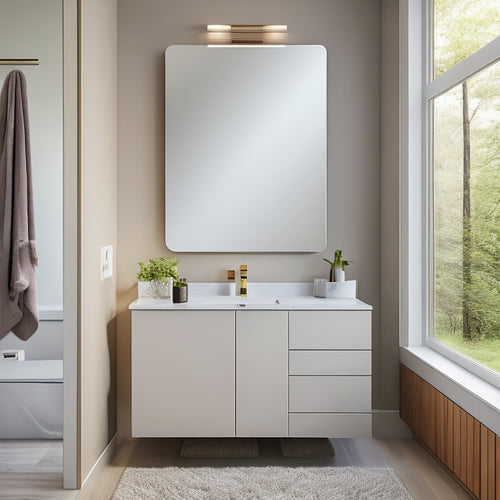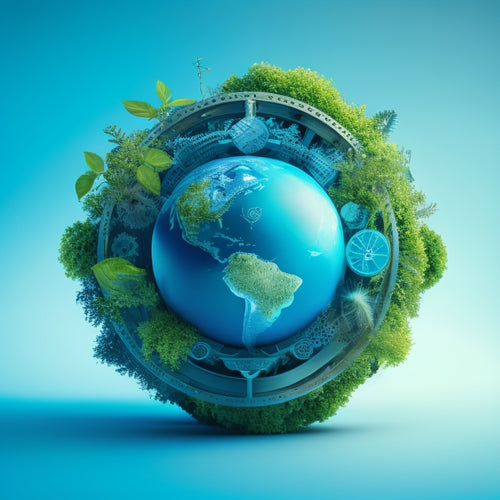
Master Water Bath Canning With Expert Tips
Share
Mastering water bath canning requires a combination of essential equipment, precise process control, and expert techniques to guarantee safely preserved and delicious food. Start by investing in a canner or large pot with a canning rack, as well as a complete canning tool set. Accurate temperature control and timing are crucial in the canning process, so prioritize canning safety precautions and monitor temperature and pressure to eliminate bacteria and preserve food. With practice and patience, you can perfect canning recipes like strawberry jam and dill pickles. Now, move forward to explore more expert tips and recipe variations to take your water bath canning skills to the next level.
Key Takeaways
• Invest in essential canning equipment, including a canner or large pot with a canning rack, for safe and successful water bath canning.
• Maintain precise temperature control and timing to ensure food is properly sterilized and preserved.
• Prioritize canning safety precautions, monitoring temperature and pressure to kill bacteria and prevent spoilage.
• Use a timer to avoid under or over-processing food, and watch for signs of spoilage like unusual odors or mold.
• Master canning recipes and experiment with new ingredients to develop skills and expand your canning repertoire.
Essential Canning Equipment
A canner or large pot, equipped with a canning rack, is the foundation of water bath canning. It provides a safe and controlled environment for processing jars, ensuring they are fully submerged in boiling water for proper sterilization and sealing.
This essential equipment guarantees that jars are fully submerged in boiling water, allowing for proper sterilization and sealing. A complete canning tool set should also be part of your arsenal. It features necessary items such as a jar lifter, lid wand, and non-reactive utensils.
Water bath canning racks are specifically designed to hold jars securely in place, preventing them from touching the pot's bottom or each other. By investing in these essential tools, you'll be well on your way to mastering the art of water bath canning.
Perfecting the Canning Process
With a solid understanding of essential canning equipment, attention turns to refining the canning process itself, where precise temperature control, timing, and technique come together to guarantee consistently safe and delicious results.
To perfect the canning process, it's important to prioritize canning safety precautions and be prepared to troubleshoot common issues.
Here are some expert tips to keep in mind:
-
Monitor temperature and pressure: Make sure your canner reaches the recommended temperature and pressure to kill off bacteria and preserve your food.
-
Watch for signs of spoilage: Be mindful of any unusual odors, sliminess, or mold during the canning process.
-
Use a timer: Accurately track the processing time to avoid under or over-processing your food.
- Stay organized: Keep all your canning supplies within reach to minimize distractions and ensure a smooth process.
Delicious Recipes to Try
Four essential canning recipes to master include strawberry jam, dill pickles, green beans, and tomato sauce, each offering a unique flavor profile and texture to elevate your pantry's offerings.
These recipes allow for flavor variations, such as adding spices to your pickles or using different types of peppers in your tomato sauce.
When troubleshooting, make sure to check your jar seals, guarantee proper acidity levels, and adjust processing times according to altitude.
With practice, you'll develop the skills to create delicious and safe canned goods.
Experiment with new recipes and ingredients to expand your canning repertoire.
For more recipes and troubleshooting tips, subscribe to our newsletter for exclusive content and expert guidance.
Frequently Asked Questions
Can I Use a Slow Cooker for Water Bath Canning?
While a slow cooker can provide a consistent, low-temperature environment, it's not suitable for water bath canning due to inadequate temperature control and lack of a rack to keep jars off the pot's bottom, making a dedicated canner or large pot with a canning rack a safer choice.
How Do I Store Canned Goods After the Canning Process?
Storing canned goods is like tucking a precious gem into a velvet-lined box - it requires care and attention. Store them in a cool, dark place, like a pantry, with organized shelves to prevent moisture and damage, ensuring your hard work remains shelf-stable.
Are There Any Alternative Sweeteners for Canning Recipes?
When substituting sugar in canning recipes, consider honey substitutes like maple syrup or agave nectar, and sugar alternatives like coconut sugar or date sugar, but note that sugar's preservative properties may be compromised, affecting shelf life and safety.
Can I Can Foods With a Pressure Cooker Instead of a Canner?
While a pressure cooker can be used for canning, it's important to prioritize Cooker Safety and adhere to Pressure Limits to avoid spoilage and foodborne illness; consult the manufacturer's guidelines and canning resources before attempting to can with a pressure cooker.
How Often Should I Check the Seals of My Canned Jars?
'It's important to verify seal integrity regularly, especially during the first 24 hours, and periodically thereafter, as storage conditions can affect seal quality; check for signs of spoilage, such as bulging lids or leaking jars.'
Related Posts
-

Innovative Hidden Storage for Modern Bathrooms
You're investing in a modern bathroom that's a serene oasis, and ample hidden storage is essential to maintaining tha...
-

Modern Vanity Units With Storage Options
Modern vanity units with storage options transform your bathroom into a stylish and organized haven. These vanities b...
-

Global Forum on Environmental Science & Solutions
The Global Forum on Environmental Science and Solutions is an essential platform for experts to convene, share knowle...


